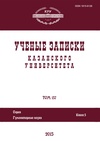Репрезентация психических состояний: речевые ассоциативные реакции немцев
Representation of Mental States Concepts: Speech Associative Reactions of the German People
Author(s): Ekaterina Mihailovna AlekseevaSubject(s): Pragmatics, Psycholinguistics, Cognitive linguistics
Published by: Казанский (Приволжский) федеральный университет
Keywords: associative representation; mental states; associative experiment; speech reaction;
Summary/Abstract: The problem of universality and specificity in the associative fields of mental states has been investigated using the method of the associative experiment developed by means of the DMDX program. The time of speech response to the shown stimuli – concepts of 34 mental states – has been measured. The examinees (33 students of the University of Hildesheim (Germany) – 27 females and 6 males aged from 20 up to 24 years) were to give their first free associations to the mental states. Nouns, adjectives, verbs, and phrases became speech responses. The most important results as the following ones: 1. The average response time to the concepts of states shown on the computer monitor is 2225.6 milliseconds. 2. To concepts of 34 mental states examinees have given 635 associations – speech reactions, on average in 18.7 associations per state. Based on the obtained results, the main conclusions have been drawn: 1. The average time of speech associative response to names of mental states is significantly longer than the response time found in psycholinguistic studies where the task was naming the stimuli shown on the computer monitor in the form of separate words, phrases, or the whole sentences. 2. The speech responses to names of mental states can build a kernel (the most typical associations), near-kernel layers, and the periphery of associative fields. Only separate associative fields of mental states concepts have a kernel. Near-kernel layers and a rather densely filled periphery are characteristic for the major associative fields.
Journal: Ученые записки Казанского университета. Серия Гуманитарные науки
- Issue Year: 160/2018
- Issue No: 5
- Page Range: 1151-1162
- Page Count: 12
- Language: Russian

